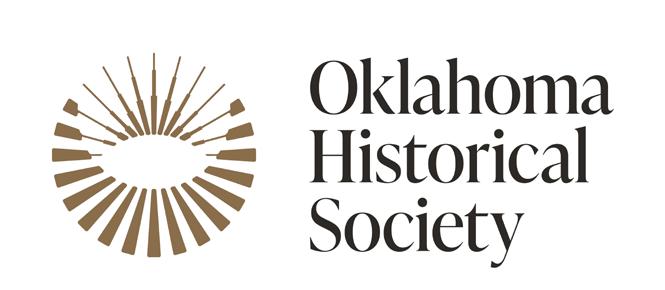

Mistletoe Leaves
Oklahoma in Context
The Oklahoma History Symposium
May 3, 2025
The 2025 Oklahoma History Symposium will be held on Saturday, May 3, 2025, at the Oklahoma History Center in Oklahoma City. Presented by the Oklahoma Historical Society, the symposium is a one-day event encompassing a range of historical topics pertaining to Oklahoma. It provides a venue for scholars, students, educators, public history professionals, and the interested public from across the state and region to share their work and interests with others. The 2025 symposium will center on the theme “Oklahoma in Context.”
Registration will open in mid-March, at okhistory.org/symposium. This event is free and open to the public.
Symposium Schedule
9:30 a.m–4 p.m. Visit symposium exhibitors
9:30 a.m. Networking, coffee, and donuts
10 a.m. Meeting of the OHS Membership
This meeting includes the executive director’s report with updates about OHS activities, the announcement of board election results, the swearing-in of new board members, and possible action on items brought before the membership, if any. This meeting is open to the public.
10:15 a.m. Organizational Meeting of the OHS Board of Directors
In this brief meeting, the OHS Board of Directors elects officers, and the president may appoint committee members. This meeting is open to the public.
10:45–11:30 a.m. Book signing
11 a.m.–12:30 p.m. Lunch
Boxed lunches may be pre-ordered at the time of registration or you may bring your own.
11:30 a.m.—12:30 p.m.
Keynote speaker
Award-winning filmmaker Loren Waters (Cherokee/Kiowa)
Waters will speak about her short documentary Meet Me at the Creek, which focuses on Rebecca Jim’s (Cherokee) efforts to restore Tar Creek in Miami, Oklahoma. Waters’s experience in the film in dustry includes directing, producing, and casting for film and television including Reservation Dogs, Fancy Dance, and Killers of the Flower Moon

12:45–1:30 p.m.
1:45–2:45 p.m.
“‘The Magnificent Citizenship’: Politics, Gender, and Race in Early Oklahoma”
Christine Carlson, PhD student; Thayme Watson, PhD candidate; Hope Cunningham, MA student, all of OU; and moderator Sarah Eppler Janda, professor, Cameron University
1:45–2:30 p.m.
“150th Anniversary of the ‘Sand Hill Fight’ on the Cheyenne and Arapaho Reservation”
Dee Cordry, author
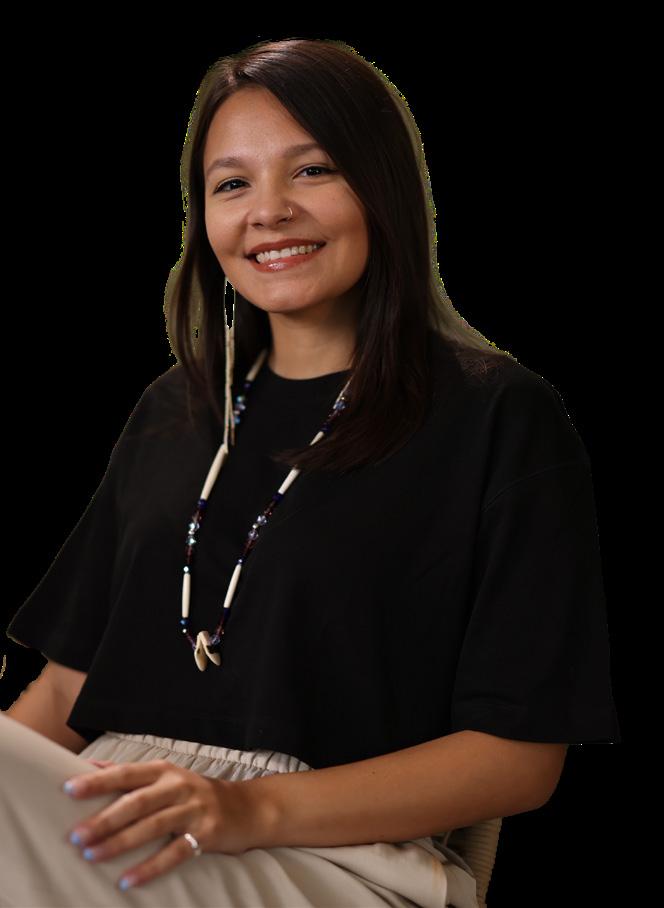
This program is funded in part by Oklahoma Humanities (OH) and the National Endowment for the Humanities (NEH). Any views, findings, conclusions, or recommendations expressed in the program do not necessarily represent those of OH or NEH.
“Raising Washington: Preserving the Legacy of African American History in Stillwater”
Laura Arata, associate professor of history, Oklahoma State University (OSU); Karen Washington, Booker T. Washington School alumnae; Norman McNickle, city manager (retired), City of Stillwater; Michelle Charles, communications specialist, City of Stillwater; Jamie Schussler, assistant professor of civil and environmental engineering, OSU; Sarah Ra, assistant professor of architecture, OSU; and James Beckstrom, owner, Beckstrom Group
“A Story on Two Wheels: Bikers in Ledger Art on the Borderlands of Experience”
James Gregory Bland, PhD candidate, University of Oklahoma (OU)
3–3:45 p.m.
“OSU’s Response to 9/11—A Reflection Through Oral History, University Newspapers, and the Institutional Change”
Sarah Griswold, assistant professor of history; Jin Kim, assistant professor, Religious Studies Program, Department of Philosophy; Corinne Schwarz, assistant professor of Gender, Women’s, and Sexuality Studies Program, Department of Sociology; Daniel Sexton, research assistant; and Alora Thompson, research assistant, all of OSU
“The Reconstruction Era National Historic Network and How it Connects to the History of Oklahoma”
Chandra Powell, park ranger, Reconstruction Era National Historic Network
4–4:45 p.m.
“Making It Home: An Overview of Oklahoma Native American Baseball Players in Major League Baseball”
Thomas Kahle, PhD student, OU; Todd Fuller, curator, Western History Collections, OU Libraries; and Rob Daughtery (Cherokee Nation citizen), retired director of community and cultural outreach, Cherokee Nation
“Bringing Bath Ave Back: Virtual Reality Modeling for Lost Historic Spaces”
Judie Mathews, special collections librarian, Metropolitan Library System; and Bobby Reed, Computer Science faculty, Oklahoma City University, and developer/owner of Drone’s Eye View
Any views, findings, conclusions, or recommendations expressed during the program do not necessarily represent those of the Oklahoma Historical Society.

By authorization of the Oklahoma Historical Society (OHS) Board of Directors, 3,600 copies are prepared at a cost of $1,293.62 bimonthly. The publication is financed in part with federal funds from the National Park Service, United States Department of the Interior.
Contents and opinions do not necessarily reflect the views or policies of the Oklahoma Historical Society or the United States Department of the Interior. Mention of trade names does not constitute endorsement or recommendation by either organization.
Mistletoe Leaves is published for the members and friends of the OHS in partial fulfillment of its mission to collect, preserve, and share the history and culture of the state of Oklahoma and its people.
Students and teachers are invited to share studies and programs and to duplicate content as desired. Editors are welcome to reprint materials with credit.
All Oklahoma Historical Society facilities are for the education and enjoyment of all. State and federal regulations prohibit unlawful discrimination in state and federally-assisted programs on the basis of race, color, national origin, and/or handicap.
Anyone denied benefits should contact the grievance manager of the Oklahoma Historical Society, 800 Nazih Zuhdi Drive, Oklahoma City, OK 73105-7917, telephone 405-837-7631 and/or the director, Office of Equal Opportunity, United States Department of the Interior, Washington, DC 20240.
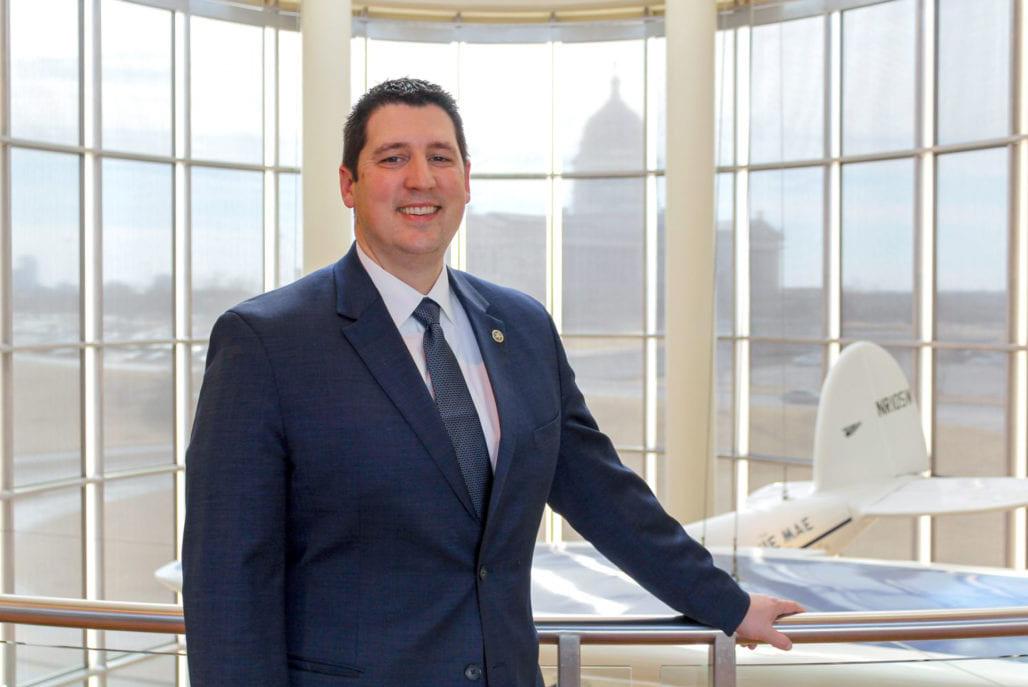
By Trait Thompson
I grew up in a farming and ranching family just north of the central Texas community of Brady. Our family did not take very many summer vacations because that was a busy time for us. Our time to take vacations was during spring or winter break when things were a little slower on the land.
There was one spring break trip we took when I was a freshman in high school that was unlike any of the others. We usually headed off for the ski slopes in New Mexico, but my parents had a different idea this year. We were going to go camping. My stepdad packed up our 1989 Suburban with all the usual camping gear: Coleman stove, tent, sleeping bags, etc. Then, we headed west. And farther west. And still a little farther west.
We made it to Big Bend National Park. As it turns out, Big Bend is quite busy during spring break, and the park ranger told us all the campsites were taken. This was, of course, before the days of online reservations. What happened next still amazes me. Without a backup plan, my folks decided we would spend the next few days meandering east along the Rio Grande. It became a choose-your-own-adventure road trip.
Our first stop was the little village of Langtry. This dusty outpost is famous for one thing: the Jersey Lilly, the courthouse
and saloon operated by Judge Roy Bean. There, I stood in the same dust of the man who was part outlaw and part judge, known more for exploits like fining a dead man $40 for carrying a concealed weapon and staging an illegal prize fight on the Mexican side of the Rio Grande. If my love of history wasn’t kindled before that visit, it certainly was afterward.
Next, we found our way to Brackettville. I’ve been a fan of Western movies my whole life, and by that time, I’d seen John Wayne’s version of The Alamo (1960) more times than I could count. You can imagine my delight when we visited Happy Shahan’s Alamo Village, where the movie was filmed. It seemed more like the real Alamo than the one surrounded by high-rise buildings in downtown San Antonio. My brother and I climbed all over the structures, and I could almost picture myself as one of the Texians tasked with defending the giant mission turned fort.
You may be wondering if we ever got to go camping on that trip. Our last stop before returning home was South Llano River State Park in Junction. It was considerably less crowded than Big Bend, and we spent a couple of great days exploring nature and walking along the banks of the beautiful South Llano River.
Sometimes, an unexpected change of plans can lead to the most wonderful adventure. As you and your family are getting ready for your next excursion, I encourage you to be open to accidentally discovering something new. Perhaps you’ll be headed out to explore some OHS museums and historic sites during our Travel Contest in March! Enjoy the journey—you never know what marvelous mysteries will be around the next bend.

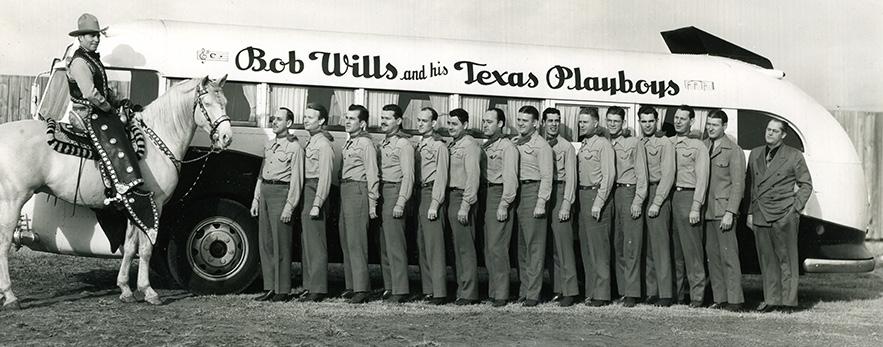
Monday, March 10 | Bob Wills Day at the Capitol
Join in a special celebration of the “King of Western Swing,” Bob Wills, as the Oklahoma Historical Society and the Oklahoma Arts Council come together for a fun-filled day! On Monday, March 10, swing by the Capitol’s second-floor rotunda from 10 a.m. to 4:15 p.m. for some great live music performances. The event will honor the life and legacy of this iconic musician, songwriter, and bandleader. The public can enjoy performances by talented artists like Jay Steagall & the Part-Timers, Kyle Dillingham, Oklahoma Swing, Georgia Parker, Jana Jae, and Bob Wills’ Texas Playboys under the direction of Jason Roberts. Oklahoma State Poet Laureate Jay Snider will also make an appearance. The Oklahoma Film and Music Office is also sponsoring this event.
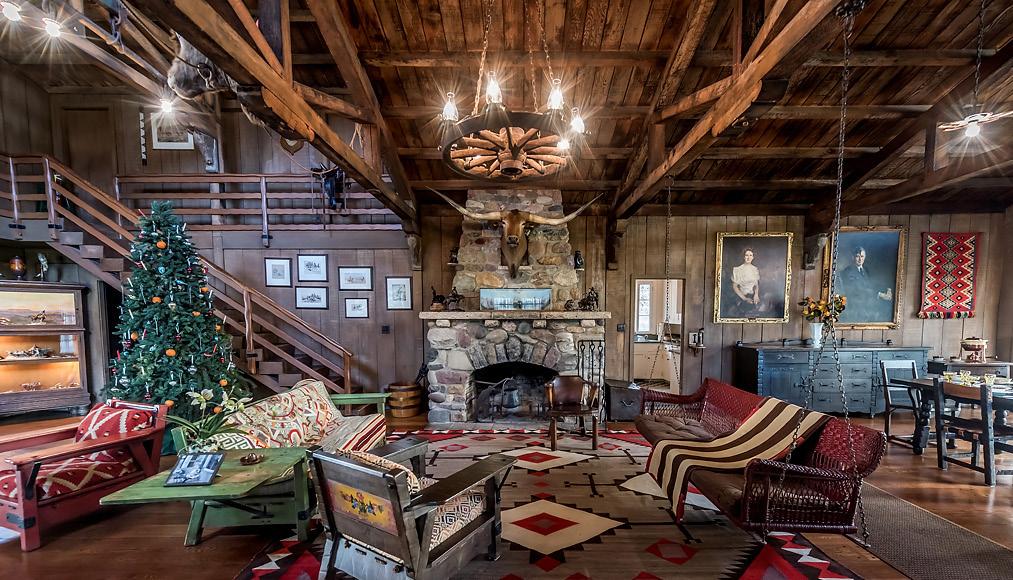
At the height of his career in the 1930s, Will Rogers was one of Hollywood’s most successful and beloved actors. He purchased land in Southern California, which he developed into a sprawling 359-acre ranch overlooking the Pacific Ocean. Will Rogers’s ranch featured a 31-room main house, guest housing, stables, corrals, a riding ring, a roping arena, a polo field, a golf course, and riding trails. He also built a large round barn with extensive stables on each side, nestled against the Santa Monica Mountains in the Los Angeles area known as Pacific Palisades.
On January 7 of this year, strong Santa Ana winds combined with the Palisades fire, causing the intensity of the flames to destroy the historic ranch property. Today, only the stone chimneys remain of the once-grand estate.
Jennifer Rogers-Etcheverry, the greatgranddaughter of Will Rogers, expressed, “While the loss of the Will Rogers Ranch is devastating, it pales in comparison to the loss of property, businesses, and, more importantly, the lives of those in the surrounding area. The Rogers family is heartbroken over the loss of the California ranch and the community. Our thoughts go out to the neighbors who have lost their homes. The Pacific Palisades community has always
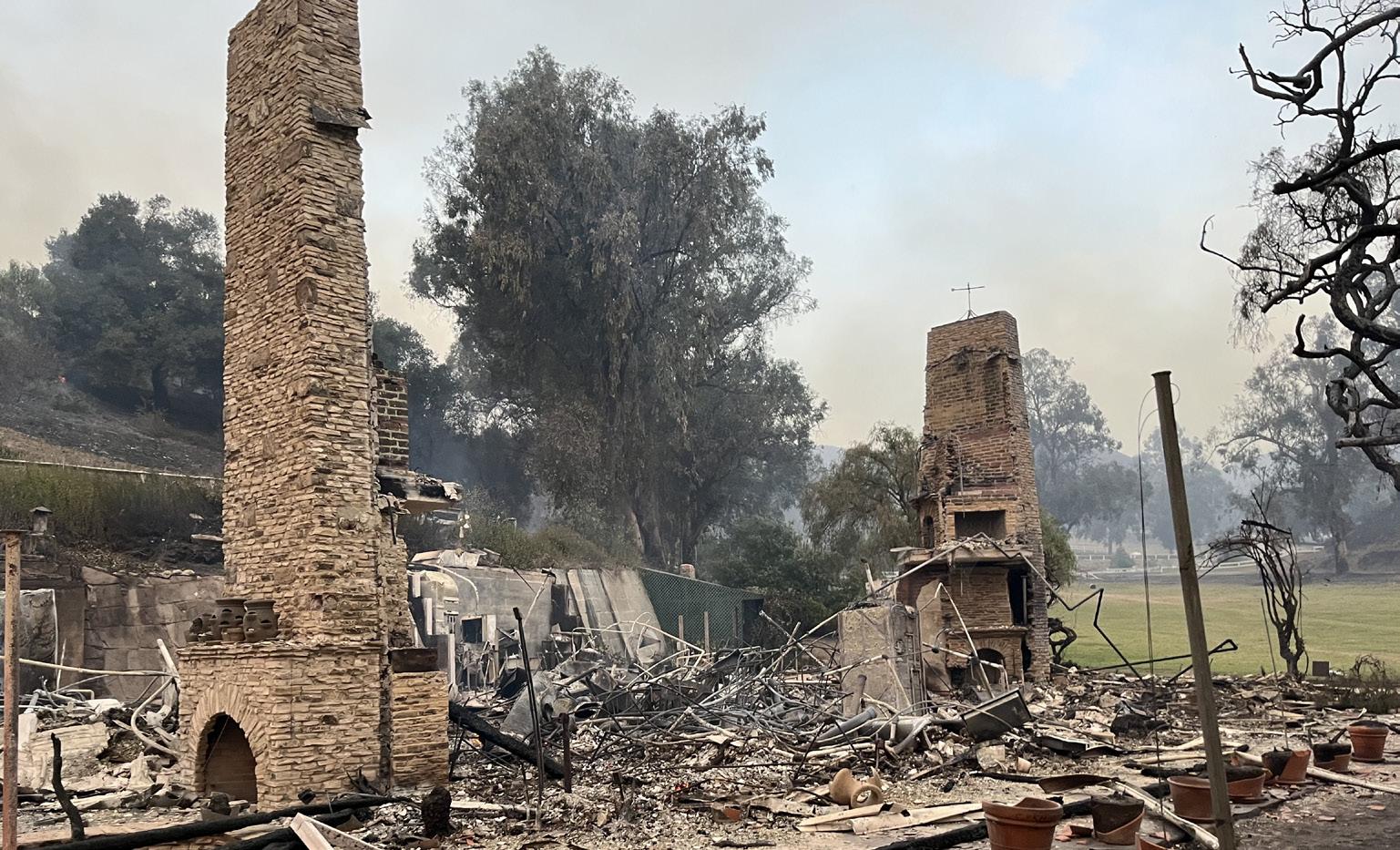
Palisades Fire
been a generous supporter of the Will Rogers State Historic Park, which is the hidden gem of the Palisades. The family donated the ranch in 1944 to the State of California to serve as a living museum for Will Rogers. The Rogers family has always been actively involved and will continue to support the recovery from this disaster.” Rogers-Etcheverry serves as the family representative and is active with the Will Rogers Memorial Museum in Claremore. She is also a founding member of the Will Rogers Ranch Foundation, which supports Will Rogers State Historic Park.
Many portraits, artwork, and historic Indigenous textiles were removed from the property just hours before the fire intensified. Items such as Will Rogers’s banjo, boots, and typewriter were also saved. Bill Hamm, a park staff member, and eight volunteers heroically rescued these artifacts, even while Hamm’s own home was burning. The items were relocated a second time to a Parks facility in Sacramento, when the initial storage location was also evacuated.
Seventeen horses were safely evacuated from the working stables on the property, despite wind speeds reaching 80 miles per hour at the time of their dramatic rescue. Those animals are now stabled safely in Santa Ynez, California.
OHS publications available online beginning in 2025

Beginning with this issue of Mistletoe Leaves, the Oklahoma Historical Society is moving into a new era. It will offer The Chronicles of Oklahoma and Mistletoe Leaves through ISSUU, a digital sharing platform. The program will help maximize our audience reach through captivating digital reading and sharing options.
The interactive capabilities of moving our publications online will offer added bonuses, like clicking and opening links, viewing videos, and leading the reader to important online tools, calendars, and content on the OHS website. Whether viewed on a phone, tablet, or full screen, The Chronicles of Oklahoma and Mistletoe Leaves will be in one accessible OHS digital library.
Currently, members paying $50 and over will receive both print and digital publications. When renewing, members can choose one or both options. For questions, please contact the membership office at 405-522-5242 or ohsmembers@history.ok.gov.
and
The ranch house served as the centerpiece of the Will Rogers State Historic Park. It was a popular tour site, wedding venue, picnic spot, and featured a well-used complex network of hiking and biking trails. In addition to the historic horse stables, the property offered riding lessons, allowing many visitors to experience the ranch as Will Rogers did. Polo games were regularly held at this historic park, which was also the resting place of two of Rogers’s favorite horses, Bootlegger and Soapsuds.
“We are deeply saddened to learn about the fire that destroyed Will Rogers State Historic Park in Los Angeles,” stated Trait Thompson, executive director of the Oklahoma Historical Society (OHS). “This tragedy resonates with the OHS because Rogers (Cherokee), was born in Indian Territory in 1879, and the Will Rogers Memorial Museum in Claremore is dedicated to honoring and preserving the legacy of ‘Oklahoma’s Favorite Son.’ We deeply appreciate the dedicated staff at Will Rogers Historic Park, who have always poured their hearts into their work alongside the Will Rogers Memorial Museum to honor the incredible legacy of Will Rogers. Our heartfelt gratitude also goes out to the Rogers family for their continued involvement and unwavering commitment to keep Will Rogers’s memory alive for future generations.”
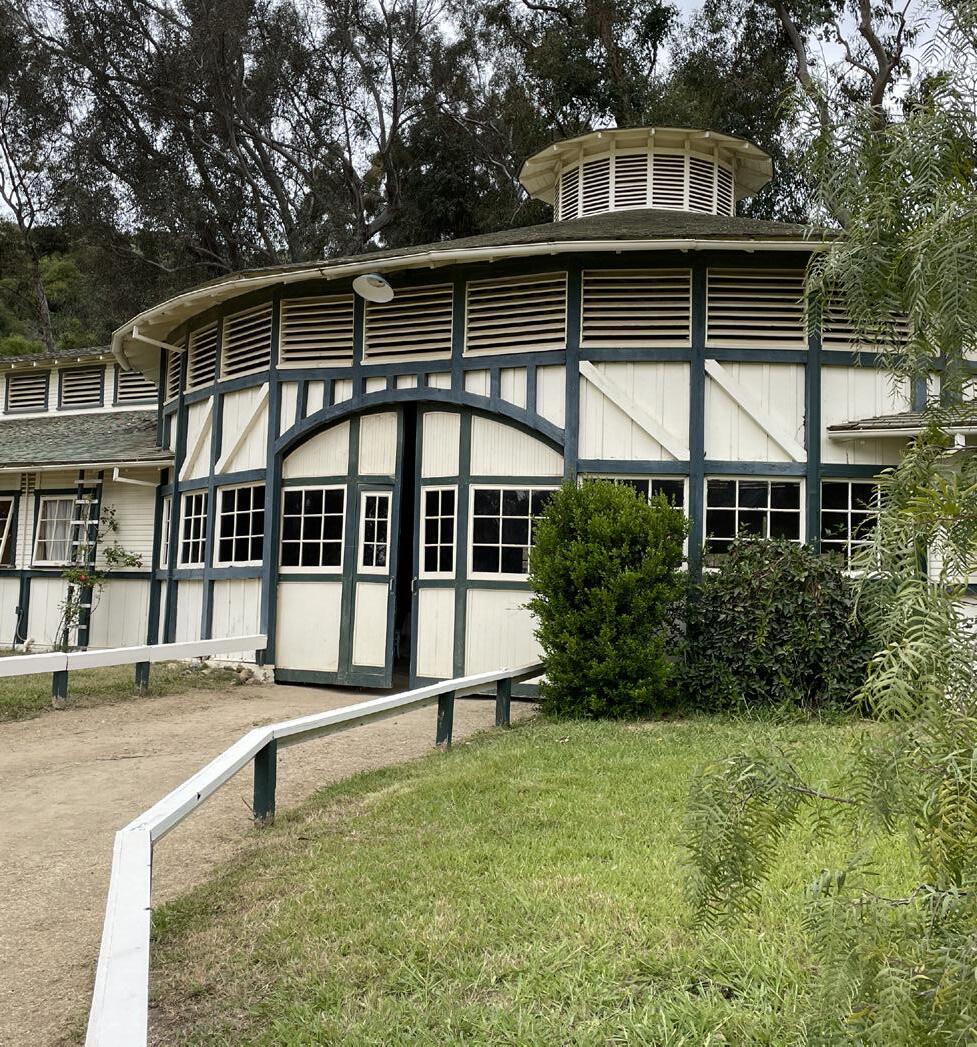
Historic Property lost in the California
The historic ranch’s barn before the Palisades fire. This structure and adjoining stables were lost on January 7.
The Palisades Fire destroyed more than 6,800 homes
buildings, including what was once the home of the Will Rogers family.
IMAGE COURTESY OF CALIFORNIA STATE PARKS
IMAGE COURTESY OF THE ROGERS FAMILY

OHS Calendar of Events April
Please visit okhistory.org/events for additional information about OHS events and programs.

Second Annual Oklahoma Women’s History Conference, Oklahoma History Center, Oklahoma City
History Alive! on the Cherokee Strip, Cherokee Strip Regional Heritage Center, Enid
Fort Towson Living History Education Day, Fort Towson Historic Site, Fort Towson
Quilting Workshop, Sod House Museum, Aline
“Third Indian Home Guard” living history program, Fort Gibson Historic Site, Fort Gibson
Bob Wills Day at the Capitol, Oklahoma State Capitol, Oklahoma City
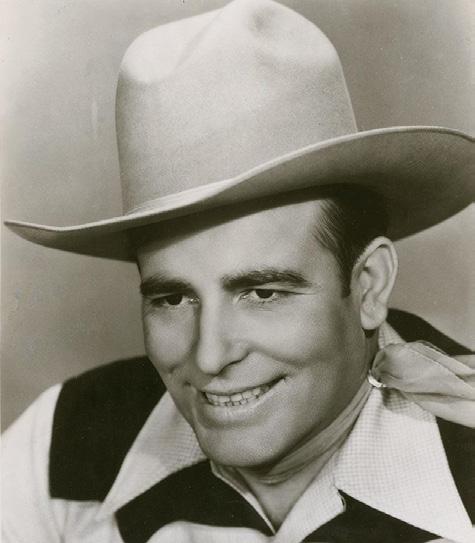
“Third Indian Home Guard” living history program, Fort Gibson Historic Site, Fort Gibson
Nature Journaling Class, Honey Springs Battlefield, Checotah
History Alive! on the Cherokee Strip, Cherokee Strip Regional Heritage Center, Enid
How to Create Marbled Paper, Hunter’s Home, Park Hill
The Fourth Grade Project Cherokee Strip Regional Heritage Center, Enid
Spring Break Activities, Will Rogers Memorial Museum, Claremore
Oklahoma Historical Society Executive Committee Meeting, Oklahoma History Center, Oklahoma City
“Third Indian Home Guard” living history program, Fort Gibson Historic Site, Fort Gibson
Hammered Aluminum Ware exhibit opens, Fred and Addie Drummond Home, Hominy
Centennial Commemoration Ceremony of Oklahoma’s State Flag, Oklahoma History Center, Oklahoma City
History Alive! on the Cherokee Strip, Cherokee Strip Regional Heritage Center, Enid
I Ain’t Afraid — The World of Lulu Bell Parr, Wild West Cowgirl book signing with Diane Helentjaris, Cherokee Strip Regional Heritage Center, Enid
Iman: Two Journeys of Faith, Rooted in Oklahoma’s Heartland film screening and discussion panel, Oklahoma History Center, Oklahoma City
Museum After Dark: Liquid History: Flash & Fizz, Cherokee Strip Regional Heritage Center, Enid
Calligraphy Class, Oklahoma History Center, Oklahoma City
Quilting Workshop, Sod House Museum, Aline
Oklahoma Historical Society Executive Committee Meeting, Oklahoma History Center, Oklahoma City
Historic Preservation Review Committee Meeting, Oklahoma History Center, Oklahoma City

Oklahoma Historical Society Awards Banquet, Oklahoma History Center, Oklahoma City
Spring Break Talent Show, Will Rogers Memorial Museum, Claremore
Museum After Dark: “Vintage Kids,” Cherokee Strip Regional Heritage Center, Enid
2025 Oklahoma Farm-to-Table Festival, Oklahoma History Center, Oklahoma City
“Third Indian Home Guard” living history program, Fort Gibson Historic Site, Fort Gibson
Lunch and Learn: “Federal Helium System (Texas to Kansas)” webinar, State Historic Preservation Office
Movie Night featuring The Prince of Egypt (2018), Will Rogers Memorial Museum, Claremore

Annual Easter Egg Hunt, Pawnee Bill Ranch and Museum, Pawnee
19 History Alive! on the Cherokee Strip, Cherokee Strip Regional Heritage Center, Enid
19 Easter Egg Hunt, Will Rogers Memorial Museum,
Luck is Fortune: Adventure, Duty, and Buffalo on the 1841 book signing and discussion with author Dr. Robert Pickering, Fort Gibson Historic Site, Fort Gibson
Sunrise Service, Pawnee Bill Ranch and Museum, Pawnee
Lunch and Learn: “Albatross or Asset: Adaptive Reuse of Sacred Places” webinar, State Historic Preservation Office
Aces and Actors: Will Rogers’s Famous Friends exhibit opens, Will Rogers Memorial Museum, Claremore
Movie Night featuring The Wizard of Oz (1939), Will Rogers Memorial Museum, Claremore
Cast-Iron Cooking Class, The Chisholm, Kingfisher
Spring on the Farm, Hunter’s Home, Park Hill
Spring Fling, Fort Towson Historic Site, Fort Towson
Wanted Dead or Alive exhibit closes, Pawnee Bill Ranch and Museum, Pawnee
“Ice Cream Social” Kilgen Theatre
Organ Performance featuring Seamus Gethicker, Oklahoma History Center, Oklahoma City
Hammered Aluminum Ware exhibit closes, Fred and Addie Drummond Home, Hominy
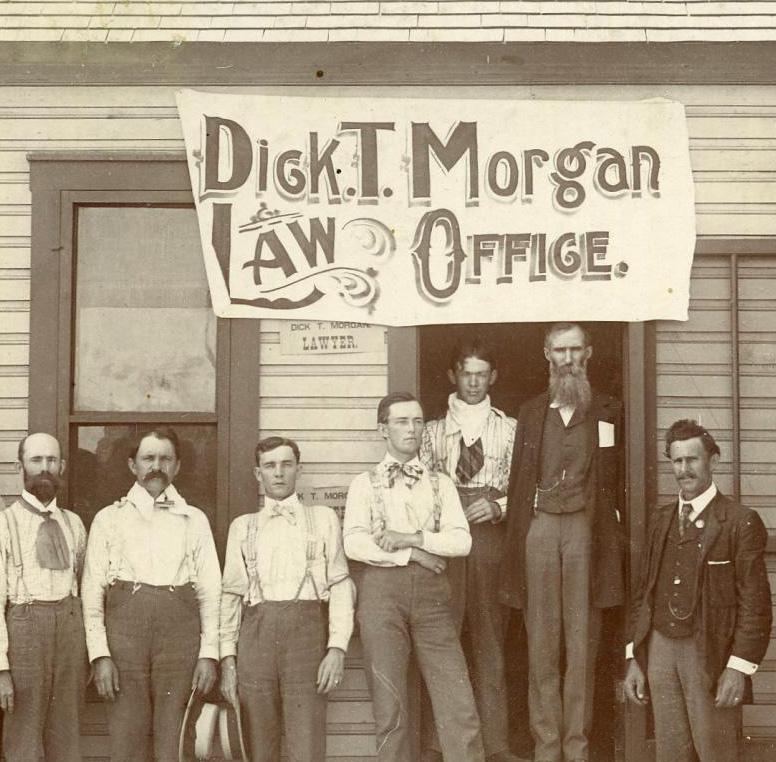
Justice for All: Dick T. Morgan, Frontier Lawyer & Common Man’s Congressman
The University of Oklahoma Press released Michael J. Hightower’s new biography, Justice for All: Dick T. Morgan, Frontier Lawyer & Common Man’s Congressman, earlier this year.
The book chronicles the career of Dick T. Morgan, an Oklahoma founding father whose public service reflected a passion for fairness and a reputation as a go-to lawyer for land disputes. He built a substantial real estate business and promoted churchbuilding across Oklahoma Territory.
As one of Oklahoma’s founders and a progressive Republican US Representative from Oklahoma from 1909 to 1920, Morgan believed in a strong government that could effectively serve the people. He crafted legislation aimed at ensuring justice for all. As former Oklahoma Historical Society (OHS) Executive Director Bob Blackburn notes in the foreword of Justice for All, Morgan was “the forgotten champion of the common man.”
Hightower dedicated over two years to this project and collaborated closely with Morgan’s great-grandsons, brothers David and Kenyon. The brothers had spent years researching Morgan and introduced Hightower to various locations where Morgan had lived, including Guthrie, Perry, El Reno, and Woodward.
The Friends of the Oklahoma History Center served as administrators for this project and will receive the proceeds from the book’s sales. Hightower conducted much of his research using OHS resources, including the manuscript archives, vertical files, The Encyclopedia of Oklahoma History and Culture, The Chronicles of Oklahoma, and The Gateway to Oklahoma History. All of these resources are available to the public.
Justice for All is for sale at the Oklahoma History Center Museum Store, bookstores, and online retailers.
UPCOMING WEBINARS | State Historic Preservation Office
The State Historic Preservation Office (SHPO) offers a variety of free webinars throughout the year. For more information, contact the SHPO office at 405-521-6249, or visit okhistory.org/ shpowebinars to register. Each webinar is limited to the first 100 registrants.

LUNCH AND LEARN: “FEDERAL HELIUM SYSTEM (TEXAS TO KANSAS)” webinar
On Tuesday, March 25, at noon, the State Historic Preservation Office will host a webinar with the General Service Administration and Stantec to discuss the history of the federal helium project as it moved from
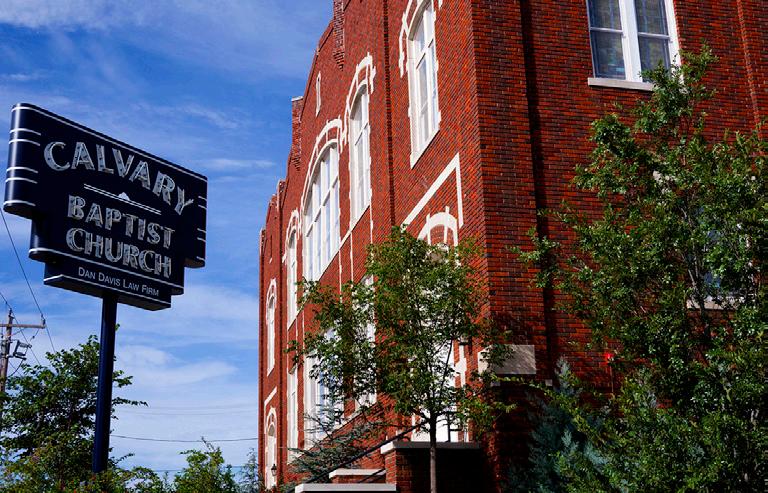
LUNCH AND LEARN: “ALBATROSS OR ASSET: ADAPTIVE REUSE OF SACRED PLACES” webinar
On Tuesday, April 22, from 2 to 3:30 p.m., Rev. Dr. Rochelle A. (Shelly) Stackhouse with the Partners for Sacred Places will discuss the adaptive reuse of sacred buildings.
These webinars are free to the public, but registration is required.

New Oklahoma National Register Listings
The Oklahoma Historical Society and State Historic Preservation Office (SHPO) are pleased to announce the National Register of Historic Places designation for the following properties in Oklahoma.
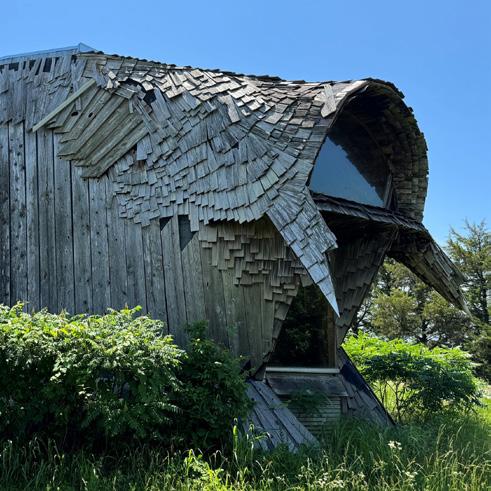
PRAIRIE HOUSE
Cleveland County
Designed by architect Herb Greene and completed in 1961, Prairie House is located at 550 48th Avenue NE in Norman. It is significant as an exemplary work of organic architecture through Greene’s architectural vision and rooted in Bruce Goff’s organic design principles. Greene’s architectural vision sought to synthesize various arts and respond to the elements of “people, place, time, materials, and spirit.” Prairie House’s intent as “something poetic” blends form, function, and environment of a particular time, place, and circumstance and embodies the organic architecture that Goff and his followers exemplify.
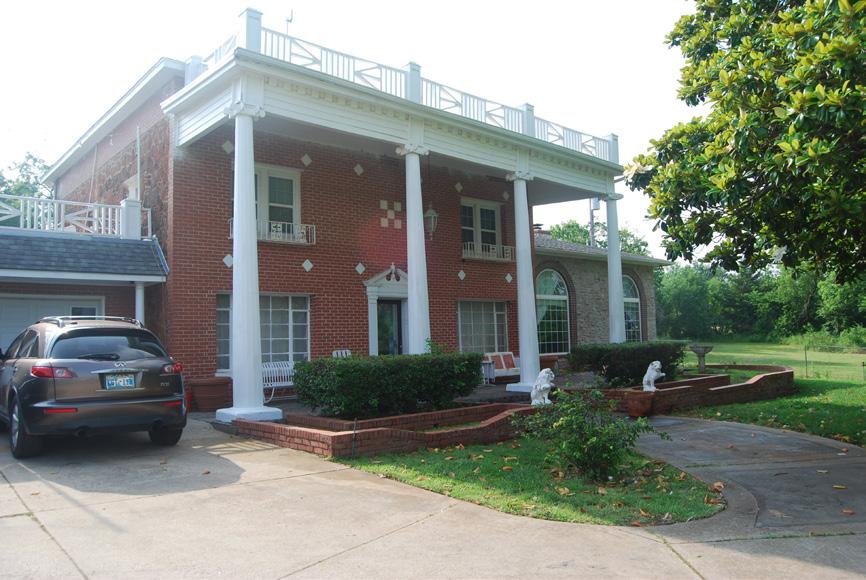

PRESERVATION AND PERSERVERANCE: CARE BEFORE IT’S GONE (2025)
Oklahoma’s Statewide Preservation Plan
The history, themes, and priorities for the next ten years have been published in a 47-page document now available for download by scanning the QR code above, or at okhistory.org/ stateplan. It outlines priorities that strive to collaborate with and empower community to celebrate, preserve, and commemorate historic resources.
Preservation and Perseverance: Care Before It’s Gone (2025–2034), Oklahoma’s statewide preservation plan, will be effective from January 1, 2025 to December 31, 2034. The State Historic Preservation Office invites preservation professionals, concerned citizens, and the general public to read the plan and advocate for preservation in Oklahoma.
DR. WILLIAM L. AND SUSIE PRICE HAYWOOD ESTATE
Oklahoma County
The Dr. William L. and Susie Price Haywood Estate in Oklahoma City was constructed c. 1930 in the Late 19th and Early 20th-century Classical Revival style and is significant at the local level for its association with Dr. William Haywood, his wife Susie Price Haywood, and their roles associated with the Black community during segregation. Dr. Haywood was a prominent physician for the Black community as early as 1910 when he became the chief African American health officer of Oklahoma County. In the 1920s, he established the Utopia Hospital, which is believed to be the first African American hospital west of the Mississippi. In the 1950s, Haywood became director and chief-of-staff at Oklahoma University Hospital. Mrs. Haywood, a cum laude graduate of Langston University, established herself as the first principal for the summer school for Negro children and eventually as a summer faculty member at Langston as an English teacher and assistant registrar. Mrs. Haywood also published textbooks for students to use, covering topics traditional books did not. The Haywood Estate is listed in the National Register for the couple’s significant role in the African American community in Oklahoma City.
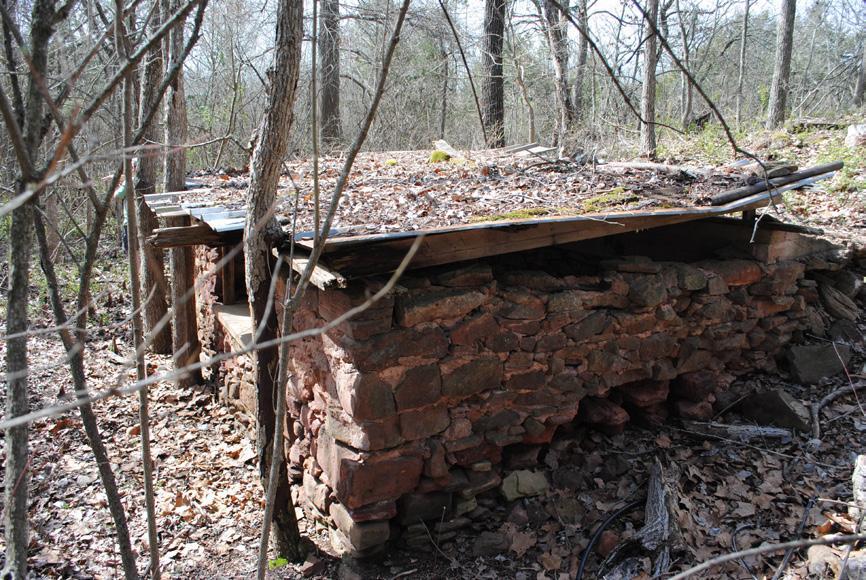
CHISHOLM SPRINGS SPRINGHOUSE Pottawatomie County
Constructed in 1846, the Chisholm Springs Springhouse is the earliest American settlement in Pottawatomie County and the only remaining feature of the mid-19th century Chisholm Springs Trading Post established by Jesse Chisholm from 1847 until 1861. The Chisholm Springs Springhouse is on private property and not accessible to the public. It is listed in the National Register for its association with Exploration and Settlement and for its potential to yield archaeological information regarding springhouse construction and use in early settlement times in Oklahoma Territory.
Listing in the National Register of Historic Places is an honorific designation that provides recognition, limited protection and, in some cases, financial incentives for these important properties. The SHPO identifies, evaluates, and nominates properties for the special designation.
Aces and Actors: Will Rogers’s Famous Friends exhibit
The Will Rogers Memorial Museum (WRMM) will open a new exhibit entitled Aces and Actors: Will Rogers’s Famous Friends on Friday, April 25. The exhibit will explore the actor’s vast connections to Hollywood and the then-fledgling industry of aviation through a series of photographs that follow his film career and associations with pilots.
In addition to being a newspaperman, a radio pundit, a humanitarian, and a philosopher, Will Rogers is possibly best known for his film career. Rogers began with silent films and was one of the few movie stars to successfully transition to talkies. He made more than 70 films during his career, which helped him to gain international fame.
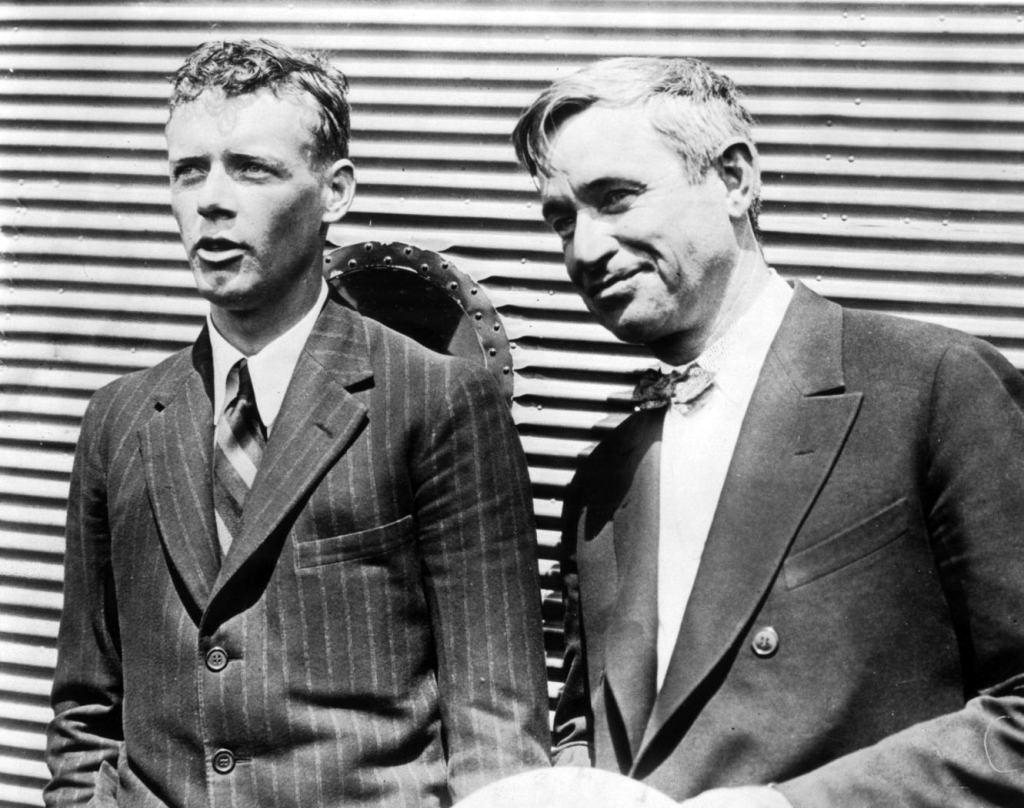
Rarely seen Walt Disney sketches of Will Rogers will be a part of the display for one week only before they return to the WRMM vault for safekeeping.
This exhibit opening will coincide with WRMM’s Movie Night, featuring The Wizard of Oz (1939). The exhibit will also feature actress Billie Burke, who played Glinda, the Good Witch of the North, in the feature film.
Exciting New Membership Changes!
The Oklahoma Historical Society is enhancing your membership experience! Members now have the option to choose digital membership cards and digital subscriptions to The Chronicles of Oklahoma and Mistletoe Leaves.
Eligible members will also receive a complimentary North American Reciprocal Museum (NARM) Association membership, granting access to over 1,400 museums and sites across North America. These new benefits will appear on your next renewal invoice or view all the changes online now at okhistory.org/ membership. Thank you for your continued support!
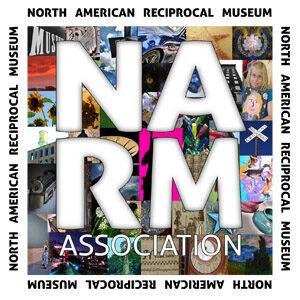
For questions, please contact the OHS Membership Office at 405-522-5242 or ohsmembers@history.ok.gov.
Iman: Two Journeys of Faith, Rooted in Oklahoma’s Heartland film screening and discussion panel
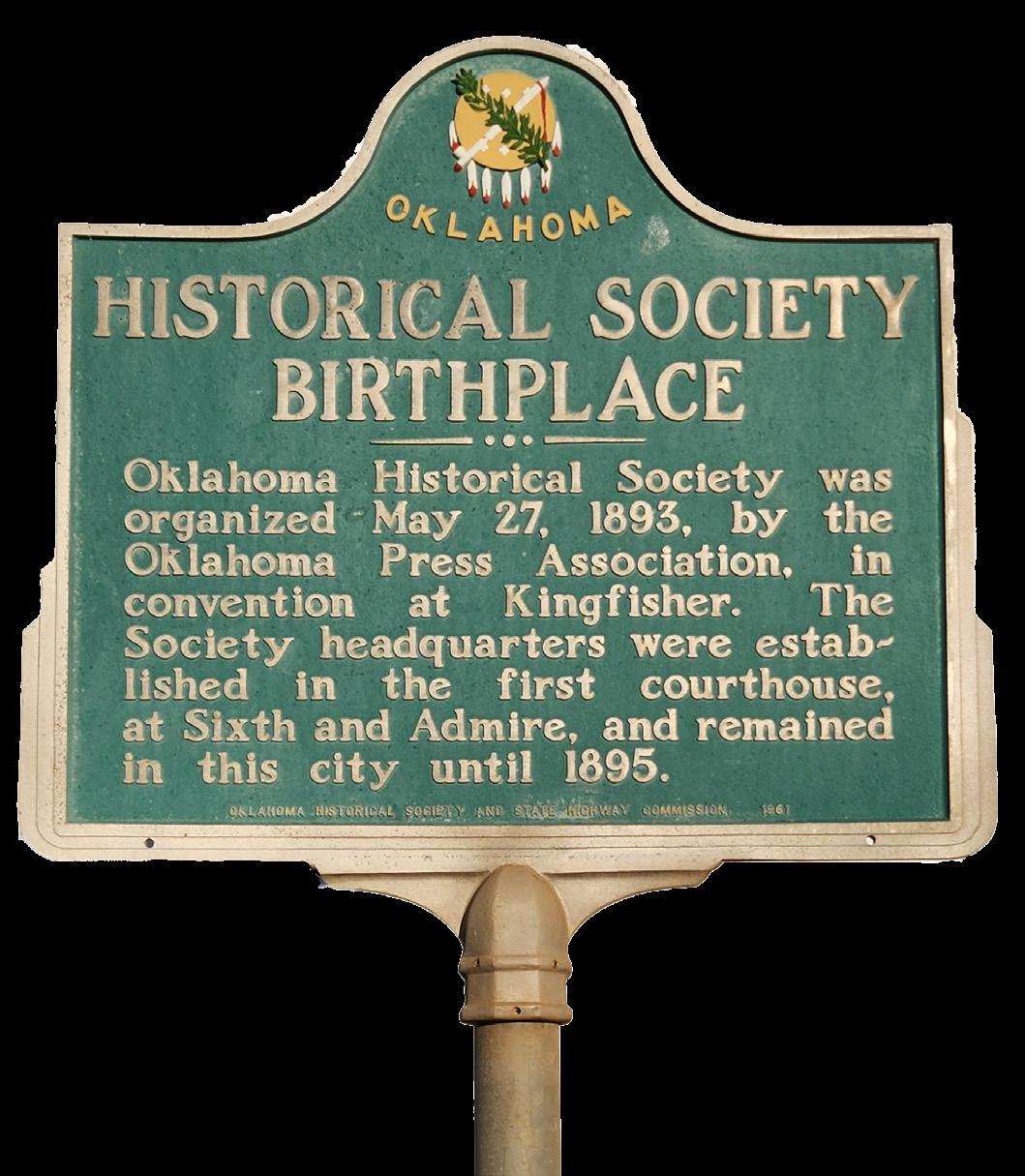
Historical Marker Program
APPLICATION DEADLINE IS MAY 15
The Oklahoma Historical Society (OHS) accepts applications for new historical markers twice yearly, with an upcoming deadline of May 15. Markers can commemorate a person, place, or event that has local, state, or national significance.
A successful application should consist of the completed application form, a narrative history of the event, person, or place to be commemorated, a map and photograph of the marker’s location, and suggested marker text. It is the responsibility of the applicant to establish historical significance through a documented narrative history of the person, place, or event to be commemorated. The OHS reserves the right to edit the final marker text.
Free-standing cast aluminum markers and red granite markers are the two most common marker types sponsored under the program. Applicants are free to work with a manufacturer of their choosing, but marker design and text must comply with specifications and standards set by the OHS.
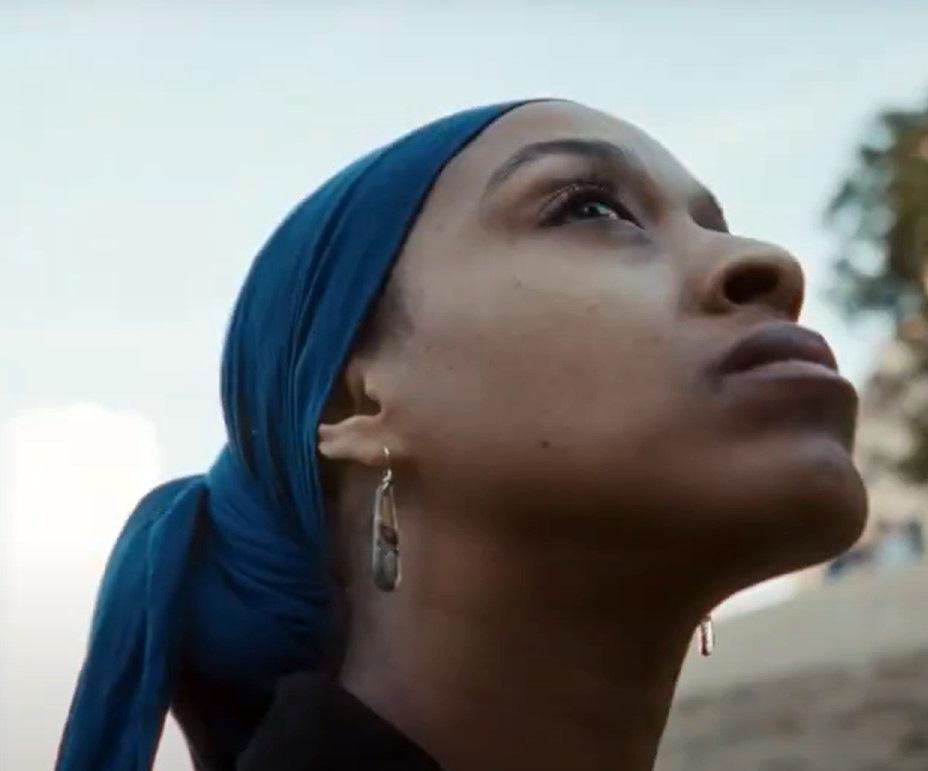
On Thursday, April 10, at the Oklahoma History Center, the Multicultural Office will host a film screening and discussion panel for Iman: Two Journeys of Faith, Rooted in Oklahoma’s Heartland. Check in begins at 5 p.m. for the screening and panel discussion that will take place from 6 to 8 p.m. The panel will consist of the film producers and other individuals involved in the project and moderated by Dick Pryor, general manager at KGOU Public Radio. Iman: Two Journeys of Faith, Rooted in Oklahoma’s Heartland is CAIR’s first documentary that features the untold story of courage, faith, and resilience in the face of rising hate. Told from the perspective of two American Muslim women, this film explores their separate journeys into faith and how they became leaders in their community in America’s heartland. It shines a light on the history of Islam in Oklahoma and the challenges posed by Islamophobia in a post-9/11 world. More than just a film, it’s a movement—a tool for educating, healing, and bringing communities together. This program is funded, in part, by the National Endowment for the Humanities’ United We Stand initiative, and funding was made possible by Oklahoma Humanities. Any views, findings, conclusions, or recommendations expressed in this program do not necessarily represent those of the National Endowment for the Humanities or Oklahoma Humanities.
Historical markers must be paid for by the applicant and must be accessible to the public.
Visit okhistory.org/markers to access the application form. Contact Matthew Pearce at 405-522-8659 or matthew.pearce@history.ok.gov for any questions about the program.
Completed applications can be sent to Matthew Pearce by email or by mail to Oklahoma Historical Society, 800 Nazih Zuhdi Drive, Oklahoma City, OK 73105.
A historical marker at the intersection of S. Main Street and E. Broadway in Kingfisher marks the location of the first OHS headquarters established at the first courthouse in Kingfisher.
American aviator Charles Lindbergh and Will Rogers were major contributors to the promotion of aviation as a safe means of travel.
Photo taken 1929 (courtesy WRMM).
Annual Awards Banquet
On Thursday, March 20, the Oklahoma Historical Society will host its annual Awards Banquet at the History Center in Oklahoma City. Each year, the Awards Banquet brings together historians, educators, and civic leaders to honor individuals in our state who have made a significant impact on our understanding of Oklahoma History.
Among the awards presented, three individuals will be inducted into the Oklahoma Historians Hall of Fame for their distinguished contributions to Oklahoma history. Recipients are celebrated for their lifelong dedication and excellence in preserving, interpreting, and disseminating the state’s story. This year, the Oklahoma Historical Society is honored to induct Dr. Sarah Eppler Janda, Carolyn Hanneman, and Rachel Caroline Eaton (awarded posthumously) with this lifetime achievement award.
The event will also celebrate outstanding educators, students, writers, and individuals in our community who advance our understanding of history and have made extraordinary efforts to preserve our state’s past. This includes recognizing new properties that have been added to the National Register of Historic Places in Oklahoma and the individuals who championed their applications.
Dr. A. J. Griffin will serve as the keynote address for the event. Dr. Griffin spent six years in the Oklahoma State Senate and is now the CEO of the Potts Family Foundation. Oklahoma politician and CEO of the Oklahoma Institute for Child Advocacy, Joe Dorman, will serve as the emcee for the event.
Cocktail attire is requested, and guests are asked to RSVP by March 10. For a full list of awards and awardees, or to purchase tickets, please visit okhistory.org/awardsbanquet. For more information, or to inquire about sponsorship opportunities, please contact Development Officer Brittney Berling at brittney.berling@ history.ok.gov.
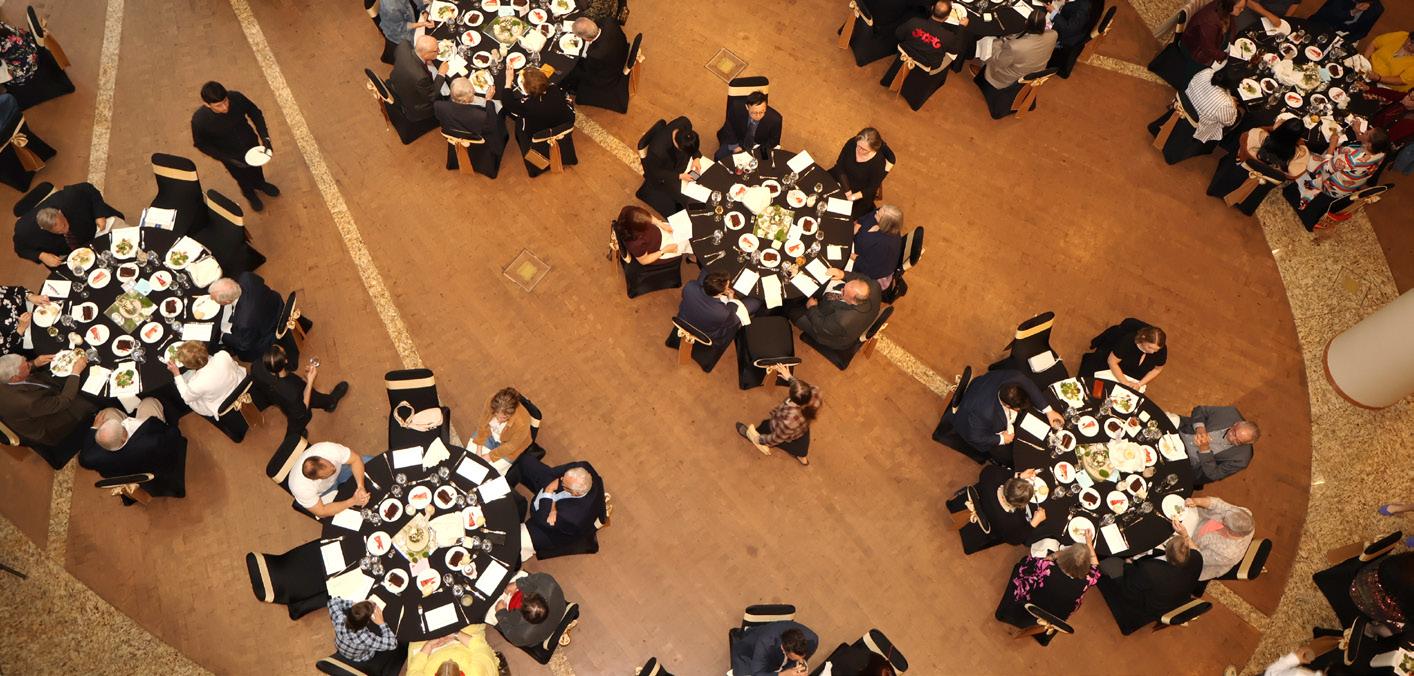

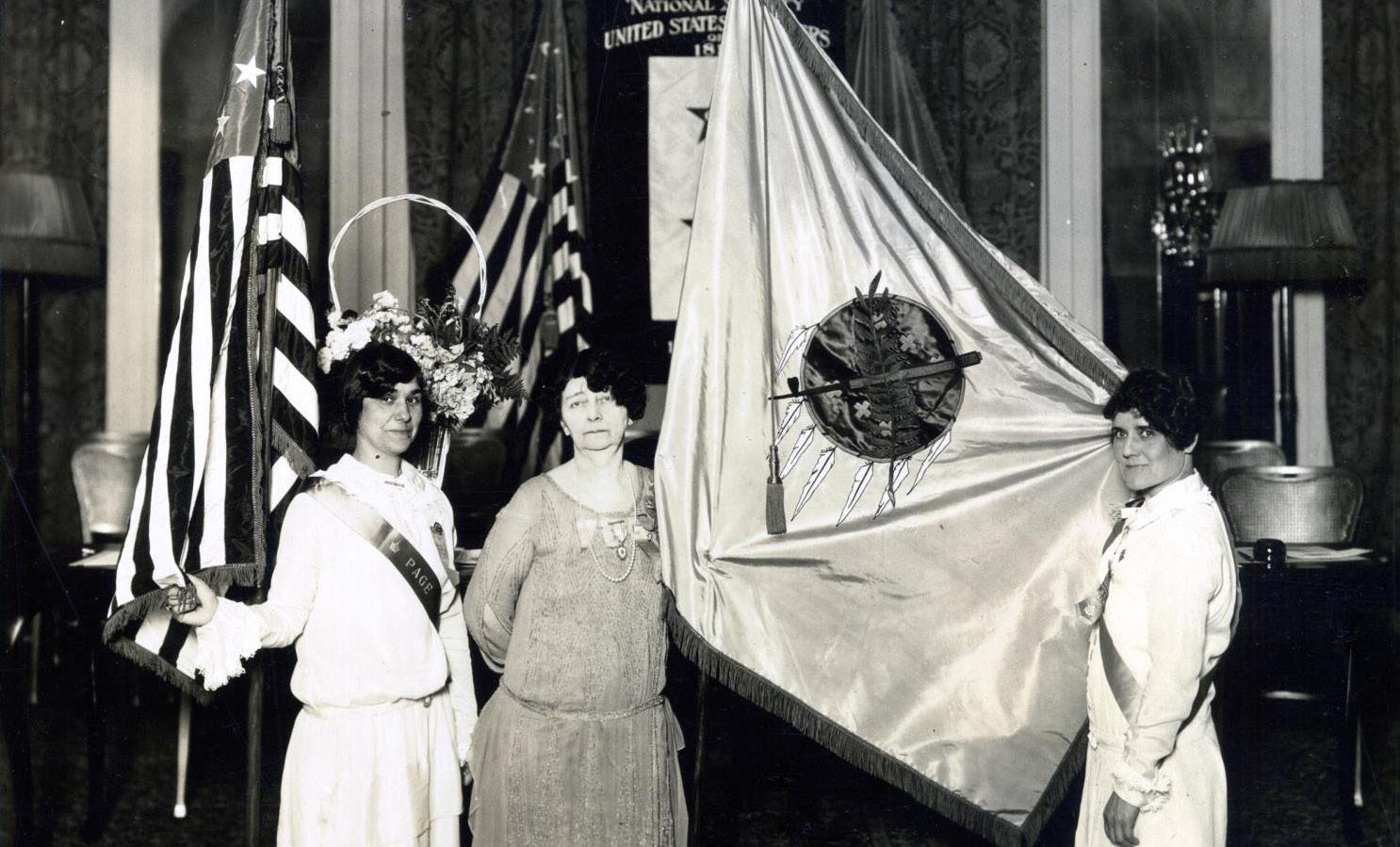
Centennial Commemoration Ceremony of Oklahoma’s State Flag
On April 2, beginning at 3 p.m., a ceremony in the Devon Great Hall of the Oklahoma History Center will commemorate Oklahoma’s current state flag, first adopted on April 2, 1925. Speakers will present the history and significance of Oklahoma’s State flags at the event.
One hundred years ago, on April 2, 1925, the state adopted a new flag design featuring an Osage shield on a blue background. A bison hide war shield belonging to Chief Black Dog II in the Oklahoma Historical Society’s (OHS) collections from the 1890s was the inspiration for our current state flag. The artifact has six crosses representing stars in the night sky painted on one side of the shield, and the other side of the shield represents the sun. Hanging eagle feathers are attached to its outer rim. The artifact inspired artist Louise Funk Fluke when creating her entry for a statewide contest held by the Oklahoma Daughters of the American Revolution for a new design of Oklahoma’s State Flag. She studied Oklahoma history, examined various artifacts, and consulted with Dr. Joseph B. Thoburn of the OHS. She ultimately decided to make the Osage shield central to her design. Fluke won the contest, and the state officially adopted the design for its flag in 1925. No state flag existed when Oklahoma was first admitted to the Union on November 16, 1907. The first flag of Oklahoma was adopted in 1911. Its design had a red field and the number “46” set in the center of the design within a white star insignia.

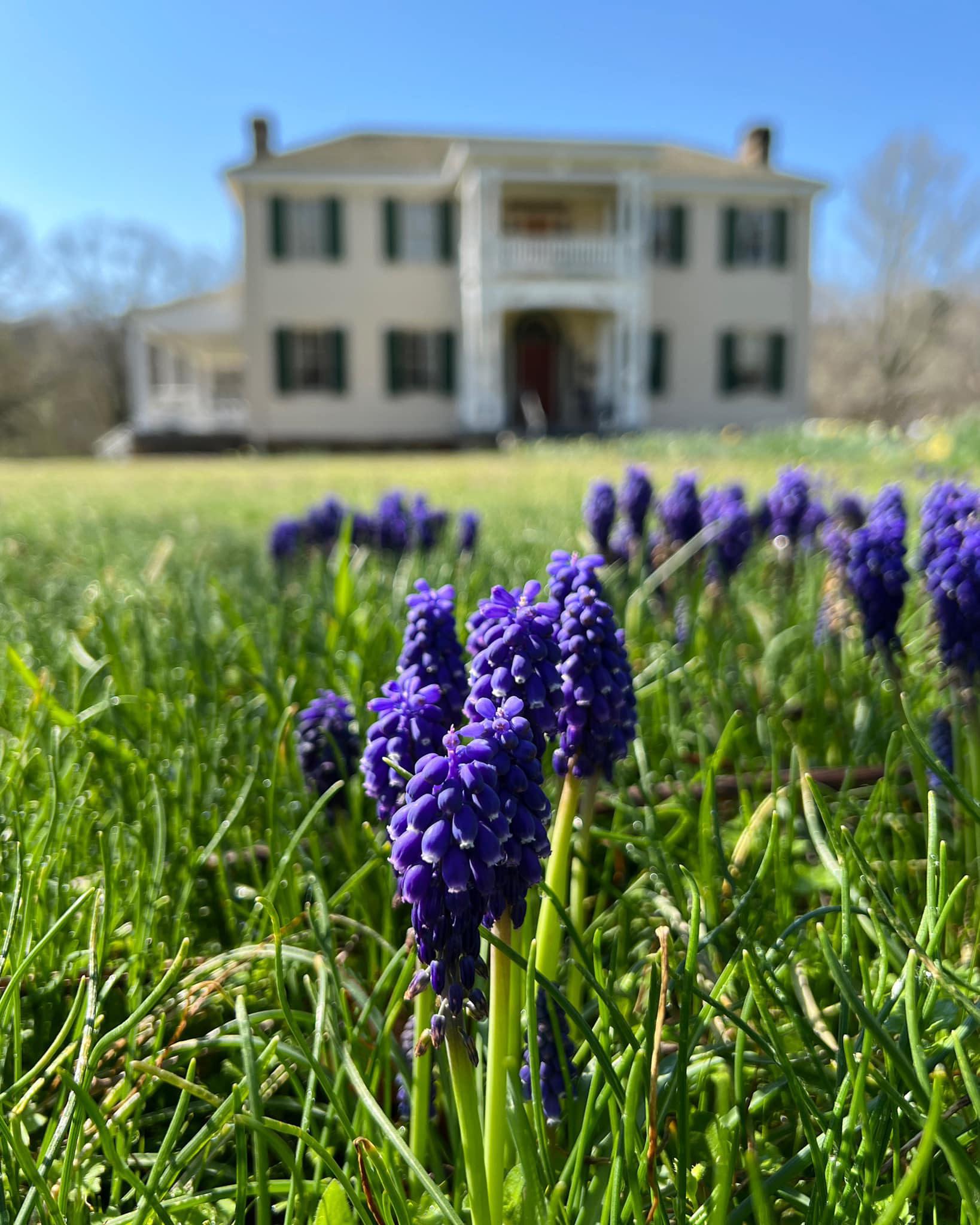
Blanche E. Little, Mary Briscoe Jones, and Ruth Tagwell Jones presenting the Oklahoma State Flag at the National Associated Council in Washington DC, April 25, 1927 (7303, Anna L. B. Korn Collection, OHS).
Oklahoma Historical Society
800 Nazih Zuhdi Drive
Oklahoma City, OK 73105-7917
ADDRESS SERVICE REQUESTED


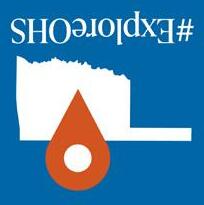
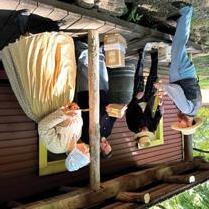
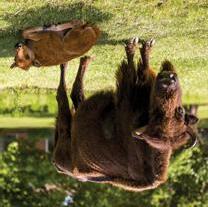
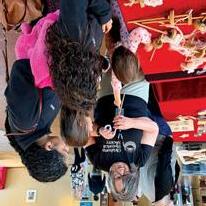
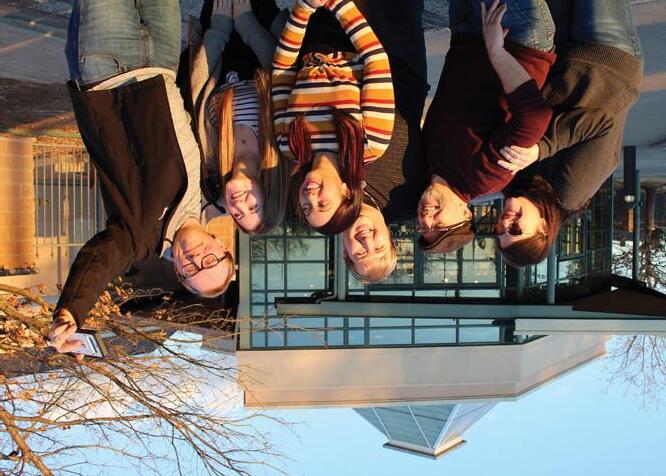
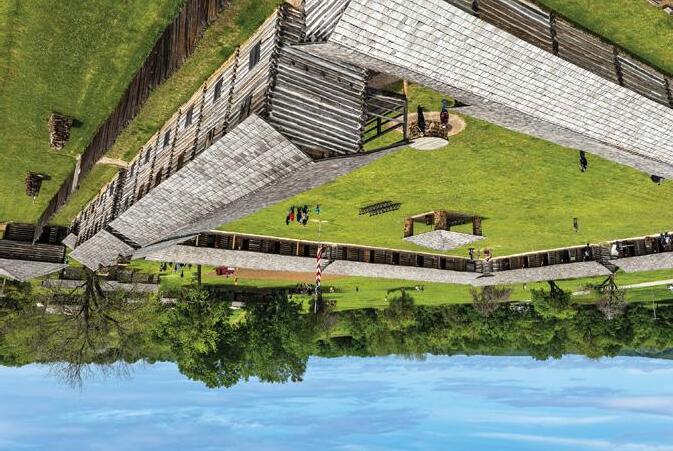
March 1 – 31, 2025
PERIODICALS
Mistletoe Leaves
Vol. 56, No. 2
#ExploreOHS Travel Contest
We’re back with the Oklahoma Historical Society’s annual #ExploreOHS Travel Contest! This year’s contest will be held Saturday, March 1, through Monday, March 31. During these dates, participants will travel to Oklahoma Historical Society (OHS) museums and historic sites across the state—competing to see who can visit the most sites!
The Travel Contest is open to the public, and all entries must be submitted on social media using the #ExploreOHS hashtag. Whoever visits the most OHS sites (March 1–31, 2025) will win a prize pack of OHS swag and your choice of:
• Option 1 – Name a baby bison this spring at Pawnee Bill Ranch and Museum
• Option 2 – Behind-the-scenes tour of any OHS site (for up to 6 people)
For the complete #ExploreOHS contest rules and eligibility requirements, please visit okhistory.org/exploreohs.
March/April 2025
Nicole Harvey named next director of the Oklahoma History Center Museum
Nicole Harvey, a longtime employee of the Oklahoma Historical Society, has been named the next director of the Oklahoma History Center Museum. She has a proven record of strategic leadership, collaboration, and innovation.
“Nicole took over as interim director of the museum in October. Since then, she has performed exceedingly well in the role. She has built strong relationships with the museum staff, opened a new sports exhibit, worked to plan new future exhibits, and strengthened the relationship between the museum and the other departments within the OHS as well as our outside stakeholders,” said Trait Thompson, executive director of the Oklahoma Historical Society. “Nicole is a strategic thinker who has been dedicated to the OHS for the past 13 years, and I know she will continue the tradition of excellence the Oklahoma History Center Museum is known for.”
In her tenure as grants administrator and later as director of strategic initiatives at the OHS, Harvey successfully oversaw the Oklahoma Heritage Preservation Grant Program, which funded more than 200 local historical projects with a total of two million dollars in awards. She also provided project-focused support for OHS’s executive leadership, guiding agency-wide planning efforts and developing key strategies that foster accountability and teamwork.
Prior to working with the grant program and strategic initiatives, Harvey served as executive assistant to the agency’s then-executive director, Dr. Bob Blackburn. During this time, she co-curated a significant exhibit and provided research, curatorial assistance, and logistical support for others. She also helped launch immersive public programming—including the annual “A Night in the Life” Gala—broadening community engagement with the organization’s mission.
Harvey is a lifelong Oklahoman who grew up in Oklahoma City. She earned her bachelor’s degree from Oklahoma City University and her master’s degree from the University of York (UK). With her deep roots in the state and extensive experience at the OHS, she is poised to guide the Oklahoma History Center Museum into its next exciting chapter.
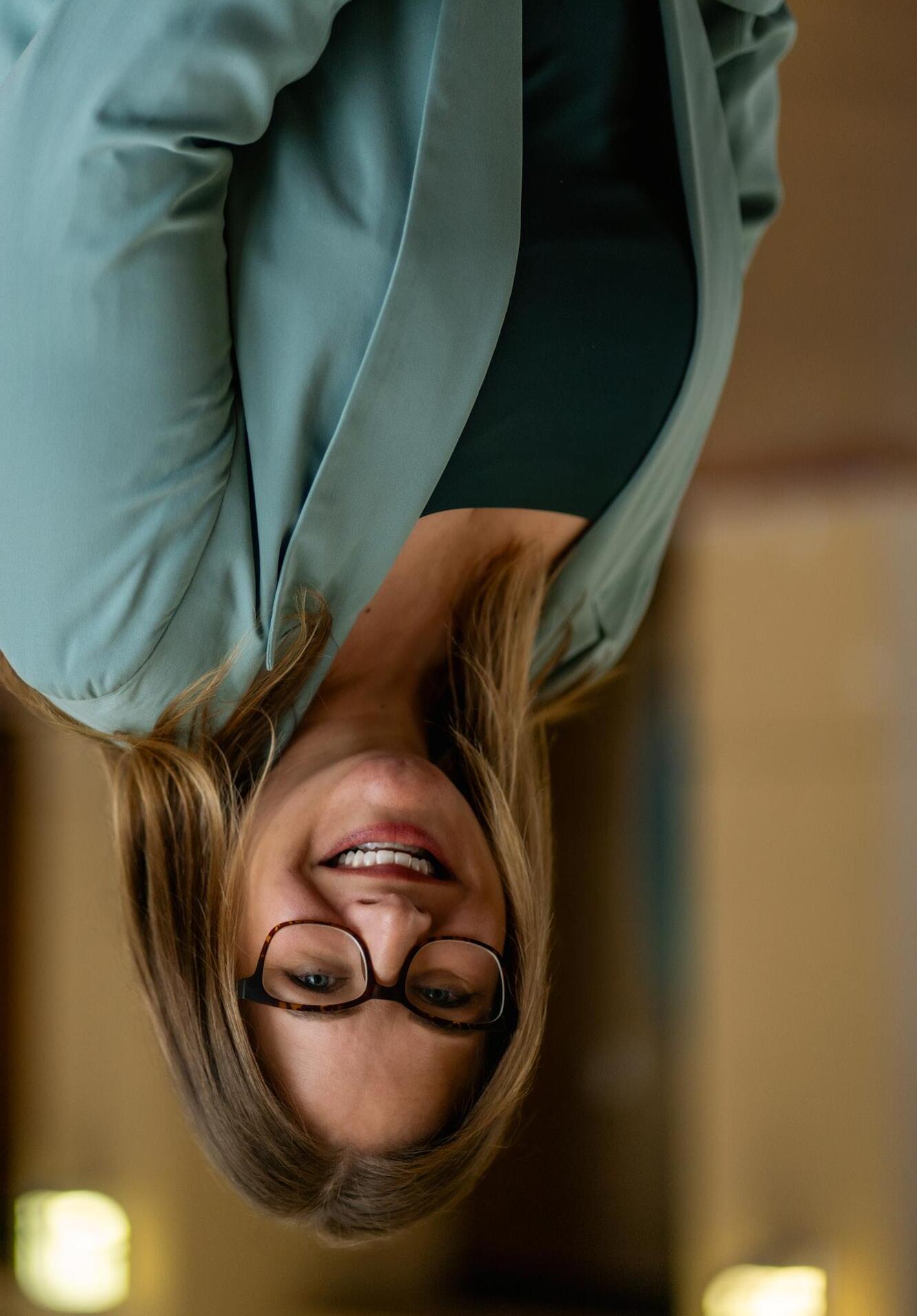
Nicole Harvey
